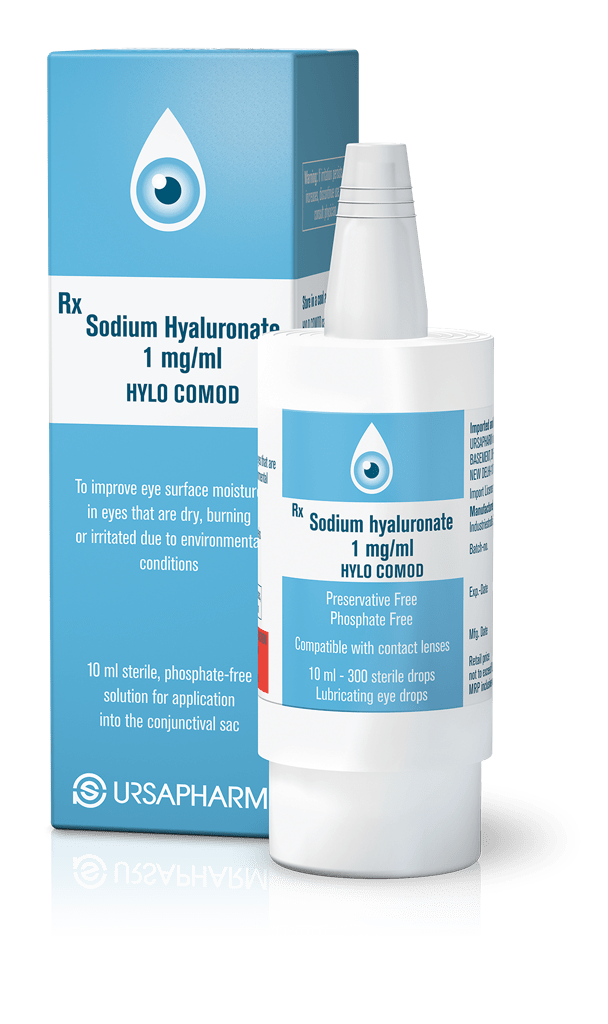Product
HYLO COMOD

HYLO COMOD
The classic among the dry eye treatments
Tears are much more than water …
As a matter of fact, the tear film that covers the ocular surface has a fairly complicated structure. An outermost thin lipid layer slows down the evaporation of the underlying aqueous phase. The aqueous phase plays an important role in supplying the ocular surface with oxygen and nutrients. An even distribution of the tear film over the eye is guaranteed by a third, i.e. a mucin layer, which is in direct contact with the cornea and conjunctiva (Figure 1).

- Superficial lipid layer
- Aqueous phase
- Mucin layer
- Surface of the cornea
When the tear film breaks up
An insufficient tear film production or a change in its composition means that the tear film can no longer form a continuous layer, i.e. it breaks up (Figure 2). As a consequence, the ocular surface cells are deprived of oxygen and nutrients leading to cellular damage that in turn causes itching, burning and a foreign body sensation. These symptoms are often accompanied by pain. In the advanced stage dry eyes can lead to a damage of the cornea and conjunctiva.
Sodium hyaluronate guarantees optimal lubrication
The naturally occurring endogenous sodium hyaluronate is ideally suited as a long-lasting, intensive ocular lubricant. Due to its chemical structure, sodium hyaluronate binds and retains many times its own weight in water. It adheres perfectly to the ocular surface and forms a uniform and stable film that keeps the eyes lubricated.
Preservative and phosphate free in the patented COMOD® device
Preservatives, which are designed to prevent contamination of eye drops during storage and use, can affect the natural tear film and damage the cells of the ocular surface. Furthermore, they can cause intolerance reactions¹. Modern ocular lubricants are therefore preservative free. This also applies to HYLO COMOD as it is provided in the patented COMOD® multi-dose device that, in a unique way, prevents contamination of its contents.
Phosphates that are widely used in eye drops can also have a harmful effect on an already damaged cornea². The binding of phosphate to calcium, which is released from damaged corneal cells, may lead to the formation of sparingly soluble calcifications that can permanently impair vision. Therefore, eye drops used on a dry and damaged ocular surface should not contain phosphates. HYLO COMOD is phosphate free and therefore presents no risk of corneal calcification.
HYLO COMOD: proven a million times over
- Eye drops containing 0.1 % sodium hyaluronate provided in the COMOD® device
- Compatible with contact lenses
- Preservative free and citrate-buffered, i.e. phosphate free
- Very economical, hence low treatment costs
| HYLO COMOD | Shelf life after opening | Storage instructions |
|---|---|---|
| 10 ml eye drops | 6 months | store at room temperature |
¹ 2007 Report of the international Dry Eye Workshop (DEWS); The Ocular Surface, 2007 (5); No.2
² BfArM & PEI Bulletin zur Arzneimittelsicherheit 2013; Ausg. 1: 7-12
Further products